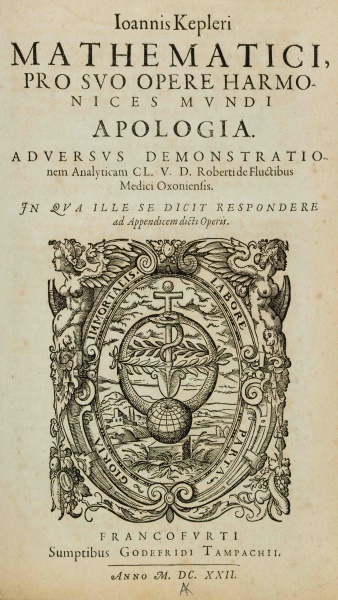Kepler: New Astronomy
Physicists tend to ignore the history of their field beyond learning a few cursory historical facts about the many “wrong” theories that preceded those currently taught. A subject that has the advantage of being able to make quantitative comparisons between experiment and theory, and furthermore, to have theories with clear causal relationships, can perhaps afford to take this liberty.
Even Johannes Kepler, who formulated laws of planetary motion still found to essentially hold true (except for tiny corrections described by Einstein’s general theory of relativity) often merits little more than a footnote. In Astronomia Nova, Kepler proposed that planetary orbits are in the form of ellipses with the sun as a focal point, rather than being perfectly circular. It is hard to imagine how revolutionary this idea was, overthrowing as it did all previous cosmological thinking about the heavens obeying geometric laws with perfect forms (i.e. circles). The notion of the geometry of the heavens was deeply ingrained, and even Kepler himself had explained the relative sizes of planetary orbits by positing a series of nested Platonic solids.
Galileo, usually taken as the prime example of a scientist willing to break with traditional views, rejected Kepler’s theory of elliptical orbits. Galileo is noted for his idea that the language of nature is mathematics, by which he meant a fairly traditional view of geometry.
It was not until the much later work of Isaac Newton that a more complete mathematical theory of planetary motion was developed—and that a causal explanation was presented as to why planets should move in orbits of a particular shape.
In the end, it is this combination of mathematics and generalizable, testable physical laws that is the characteristic of modern physical science.
In one sense, Kepler represents the end of a two-millennium tradition in science of linking geometrically based theory to careful observations, without the need to make a link to what we would now refer to as laws of motion. Looking back at the work of Ptolemy and then of Copernicus, we can be amazed at just how precise their observations really were. For example, the orbit of the earth is extremely close to being circular (a drawing of the actual orbital shape is difficult to distinguish from a circle). That early scientists were able to distinguish these small deviations is remarkable. Tycho Brahe’s even more refined observations were then enough for Kepler to make his breakthrough proposals for laws of planetary motion in the Astronomia Nova, both for elliptical orbits and a formulation of the relationship between the period of a planetary orbit and its distance from the sun; these laws would later be given further confirmation by Newton through his law of gravitation and laws of motion.
—Robert Brecha, Professor, Physics
Robert Brecha, professor of physics, explains how Johannes Kepler advanced research on heliocentrism through his exploration of planetary motion. Interview is an online supplement to the University of Dayton exhibit Imprints and Impressions: Milestones in Human Progress—Highlights from the Rose Rare Book Collection, held Sept. 29 through Nov. 9, 2014.

